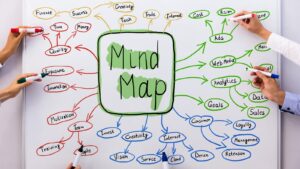Prelude
Flesh the Skeleton may seem to have an anatomical denotation for some readers. However, this terminology which I have coined over the years is deeply rooted in the English teaching practice in general and targeting the reading skill in particular. In Saudi Arabia, where I have been teaching English as a foreign language for over a decade, I would always be asked in interviews for a teaching position about how to teach reading in EGP (English for General Purposes) as well as ESP (English for Specific Purposes) courses. On various occasions, I would – like any other English teacher – seek to stage the reading into a prereading, while-reading, and post-reading.
The terminology had not yet seen the light until one day, I was called for an essential interview with three professional native-speaking interlocutors. In the middle of the interview, I was asked the same reoccurring question about how I teach reading. Only then did the idea spark, and I went about explaining the strategy as if it had been born with me. The interviewing panel insisted that there be a demonstration in a real-time classroom setting. Thankfully, it was a remarkable success, and I was offered the job right on the spot.
Description
Flesh the Skeleton is entirely an analytical method to conduct a reading class. A skeleton is drawn on the board with mainly the head, the limbs, the heart, the fingers, and the toes. It is not a formidable task even for a novice teacher. The head is labelled by the students as the best title they can give to the text. The heart stands for what the passage is mainly about. The arms and the legs are used to highlight the subsidiary ideas that the text entails. The fingers and the toes will be used to point out the small details related to the subsidiary ideas.
Within ten to fifteen minutes, individually or in groups, students compete to draw their skeletons and label them for comparative analysis with other labelled skeletons. The sky is the limit for why some choice has been made and which is which. A final agreement must be reached, and a final skeleton is to be drawn, labelled and analysed holistically. A variation of this model is to draw eyes and ears for subsidiary ideas in the reading and alternatively use the fingers and toes for target vocabulary that the teacher finds themselves obliged to bring home to the students.
Challenges and Solutions
Although Flesh the Skeleton might appear to be relatively easy to implement, teachers have to be fully aware of how to negotiate the students’ final product of their skeleton of the reading and facilitate the task through scaffolding and indicative feedback. Another critical obstacle is time management, as students might not be able to finish the fleshing of their skeletons within the allotted time. The teacher’s discretion here comes into play, where groups can be assigned to label specific parts of the skeleton. Furthermore, students might draw different shapes of skeletons, and to avoid this, teachers have to have a mutual agreement with the students in a uniform shape.
To reinforce the fleshing, students can be tasked to write up their questions about the primary and subsidiary ideas in the passage using reading subskills such as inference, reference, summary, vocabulary, insertion, and to name only a few. Another critical aspect of the Flesh the Skeleton technique is to decide on the author’s purpose, which students can thought-balloon in the head of the skeleton. Ultimately, Flesh the Skeleton is an engaging and interactive strategy that gets every student on the edge of their seats. Students eventually become readers with probing eyes and critical-thinking minds. It helps transforms their mental ability whenever they encounter a reading task. Now that I have prescribed some medication to enhance and improve the reading skill, what are your thoughts in this regard?




